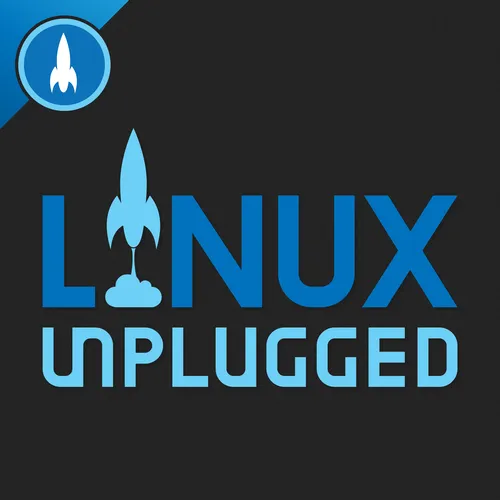616: From Boston to bootc
- Author
- Jupiter Broadcasting
- Published
- Sun 25 May 2025
- Episode Link
- https://linuxunplugged.com/616
Fresh off Red Hat Summit, Chris is eyeing an exit from NixOS. What's luring him back to the mainstream? Our highlights, and the signal from the noise from open source's biggest event of the year.
Sponsored By:
- Tailscale: Tailscale is a programmable networking software that is private and secure by default - get it free on up to 100 devices!
- 1Password Extended Access Management: 1Password Extended Access Management is a device trust solution for companies with Okta, and they ensure that if a device isn't trusted and secure, it can't log into your cloud apps.
Links:
- 💥 Gets Sats Quick and Easy with Strike
- 📻 LINUX Unplugged on Fountain.FM
- LINUX Unplugged TUI Challenge Rules — Help shape the challenge - what did we miss?
- TUI Challenge Rules Discussion Thread
- Red Hat Summit 2025 Homepage — May 19-22 2025 in Boston, MA
- Red Hat Summit 2025: Execs Tout Opportunities In Open Source AI, Virtualization Migration — OpenShift Virtualization has seen almost triple the number of customers, with the number of clusters deployed in production more than doubling and the number of virtual machines managed by the offer more than tripling.
- Agentic AI, LLMs and standards big focus of Red Hat Summit
- Red Hat Summit: Key Innovations for IT Channel Partners
- Unlock what’s next: Microsoft at Red Hat Summit 2025 — Red Hat Enterprise Linux (RHEL) is now available for use with Windows Subsystem for Linux (WSL).
- Red Hat Launches the llm-d Community, Powering Distributed Gen AI Inference at Scale — Red Hat’s vision: Any model, any accelerator, any cloud.
- Red Hat Introduces Red Hat Enterprise Linux 10 with Supercharged Intelligence and Security Across Hybrid Environments — Red Hat Enterprise Linux 10 delivers a paradigm shift in enterprise operating systems with image mode.
- 10.0 Release Notes | Red Hat Enterprise Linux | 10 | Red Hat Documentation
- Red Hat Enterprise Linux 10 Officially Released, Here's What's New — Red Hat Enterprise Linux 10 highlights include Red Hat Enterprise Linux Lightspeed for integrating generative AI directly within the platform to provide users with context-aware guidance and actionable recommendations through a natural language interface.
- RHEL 10: Leading the future with AI, security and hybrid cloud
- Red Hat Enterprise Linux 10 Reaches GA
- SiFive Collaborates with Red Hat to Support Red Hat Enterprise Linux for RISC-V — The developer preview of Red Hat Enterprise Linux 10 is initially available for use on the SiFive HiFive Premier P550 platform.
- Red Hat AI on Hugging Face
- FIPS 203/204/205 — These standards specify key establishment and digital signature schemes that are designed to resist future attacks by quantum computers, which threaten the security of current standards.
- Virtualization success stories: Join Red Hat OpenShift Virtualization's momentum in 2025
- llm-d — llm-d is a Kubernetes-native high-performance distributed LLM inference framework
- What is vLLM? — vLLM is an inference server that speeds up the output of generative AI applications by making better use of the GPU memory.
- Image mode for Red Hat Enterprise Linux — Image mode leverages the bootc tool to build and deploy Red Hat Enterprise Linux. Bootc stands for bootable container, and the image will include the kernel, bootloader, and other items typically excluded from application containers.
- Image mode for Red Hat Enterprise Linux Overview
- Introducing Fedora Project Leader Jef Spaleta
- Bluefin — Featuring automatic image-based updates and a simple graphical application store, Bluefin is designed to get out of your way. Get what you want without sacrificing system stability.
- KongrooParadox's nixfiles — This was my second nixos release since getting into Nix last year (February I think), and this strategy made it really painless. No surprises about deprecated options since I saw these cases slowly when these changes hit unstable.
- yazi: Blazing fast terminal file manager written in Rust, based on async I/O
- jira-cli - Feature-rich interactive Jira command line
- browser-use — Make websites accessible for AI agents
- Thomato's TUI Resources
- Pick: RamaLama — Make working with AI boring through the use of OCI containers.
- ramalama on GitHub — RamaLama is an open-source developer tool that simplifies the local serving of AI models from any source and facilitates their use for inference in production, all through the familiar language of containers.
